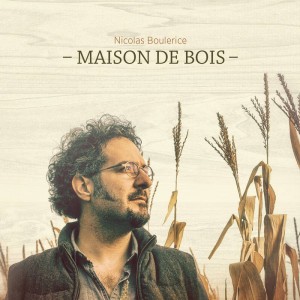
Ici on fête
I owe a large debt of gratitude to my friend Melanie in Montréal for alerting me to the gem that is Ici on fête, a recently released live compilation album featuring a broad swath of bands and artists in the Quebecois trad genre. This thing features not one, not two, but FIVE of my top favorite Quebec bands, all of whom I’ve posted about in glowing terms as you all know. La Bottine Souriante! De Temps Antan! Le Vent du Nord! Genticorum! And Les Charbonniers de l’Enfer!
It’s pretty much only lacking Galant tu perds ton temps to be a stunningly accurate summuary of my entire collection, really. And while I must sadface at the lack of that fine group, there is much consolation to be found in several other familiar names out of my collection here–Les Batinses, Mes Aïeux, Nicolas Pellerin, Yves Lambert & Le Bébert Orchestra, Les Chauffeurs à Pieds, and Michel Faubert.
Melanie pointed me at this communique about the album, from which I learn that the redoubtable M. Faubert (whose voice I came to know as part of the Charbonniers) is a driving force behind the collection. He in particular is represented on three of the tracks, and he’s in excellent voice in all three, setting the bar very high for everyone else’s performances–and, happily, every other artist on the album meets and matches him.
Tracks 2 and 3 all by themselves make this collection worth the price of admission for me. Y’all already know I’m a De Temps Antan fangirl, and hearing them whip through a live take of “Buvons mes chers amis buvons” is always fun. But what really blew my socks straight off is La Bottine Souriante’s track 3, “Le p’tit porte-clé”–which I immediately recognized as the song I know as “Le ziguezon”, a very early footstomper from La Bottine’s first couple of albums, recorded with André Marchand singing lead. “Le ziguezon” is one of my regular repeat favorites, and to hear it sung by Éric Beaudry here, doing it fine lively justice, made me want to start stepdancing through the streets of downtown Seattle.
Of course I cannot talk about my favorite tracks without talking about Le Vent du Nord. They’re here too, checking with a very strong take of “La fille et les dragons”. This is a song I’ve experienced as its studio take as well as on both of Le Vent’s live albums–but not with a drum track, which was a startling and fun addition, though I wouldn’t want to make a habit of that. (The drum track, after all, rather drowned out the laser precision of the feet of Olivier Demers. And we can’t have that, now can we?)
Genticorum also represents, with a take of one of their earlier instrumentals, “Cascou”, from their album Malins Plaisirs. The only lament I have about this performance is that Alexandre de Grosbois-Garand is not playing his flute on this set. But since he is cutting loose on the bass, that lament is actually fairly small. I’ve seen and heard that bass with my own eyes and ears, people. Five-stringed fretless basses are love.
And then there’s Les Charbonniers de l’Enfer, who offer up what to my ears is a treat indeed: a song of theirs that I do not, in fact, have represented on any prior album of theirs I own! The song is called “Tout l’monde est malheureux”, and it flips back and forth between morose and full harmonic speed. My ear for a song is tugging at this, convinced I’ve heard it before at some point, but I don’t currently have anything else by the same title–so if some other band I’ve purchased music from has recorded this, they did it under a different title. Clearly I’m just going to have to listen to my entire collection again until I find it. Oh darn.
“Souliers rouges” was another song I immediately recognized, though here it’s performed by Manigance, and I’m familiar with the version by La Volée d’Castors. Still, I find it great fun to hear different artists’ interpretation of the same song (the aforementioned “Le ziguezon” is a great example of this, given that I’ve got a version of that by Mauvais Sort in my collection too!). This time was no exception.
Les Tireux d’Roches, as if to console me for the lack of Genticorum’s flute firepower, handed me some of their own and filled my ears with glee. And harmony, for that matter. Very much liked their take of “Maluré soldat”. I’ve got a bit of this group represented in my collection now, but I didn’t have this song yet, which is one on of their albums I have not yet acquired. I shall be rectifying this problem at my earliest opportunity.
I was quite pleased, too, to see women take the lead on the singing at least on a couple of the tracks, so I’ll call them out both by name here: Mara Tremblay on “La chanson du bavard”, and Angèle Arsenault on “J’ai un bouton sur le bout de la langue”. This wasn’t quite enough consolation to make up for the lack of Galant tu perds ton temps, but it did help!
All in all the album is upbeat in spirit, which is befitting a release targeted for the holiday season (c.f., the communique I linked to above). While the material here isn’t specifically holiday-themed, it is nonetheless quite festive–one of the things that made me fall in love with this entire genre of music to begin with.
So if you’re looking to get into Quebecois trad, Ici on fête would be an excellent place to start. Investigation leads me to find it only available to a limited degree–it’s on iTunes, but only on the Canada store, here. And if you want to order the album from Amazon, I’d strongly advise hitting Amazon.ca in particular, since the Amazon.com site has it at import prices. You’ll get it much more cheaply from Amazon.ca, here. (Note the slow delivery time. But also note that Amazon.com right now isn’t showing the album in stock at all.)
Quebec listeners can get it from Archambault digitally here as well as on CD. Renaud-Bray is also carrying the disc here.
Outside of Quebec though, your easiest bet will be to try to scarf an iTunes gift card for the Canada store and buy it that way. It’ll be a hard hunt, but if you can find it, your ears will be rewarded.





